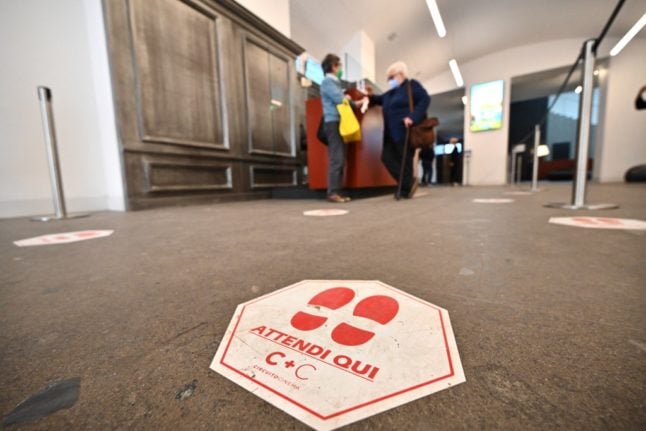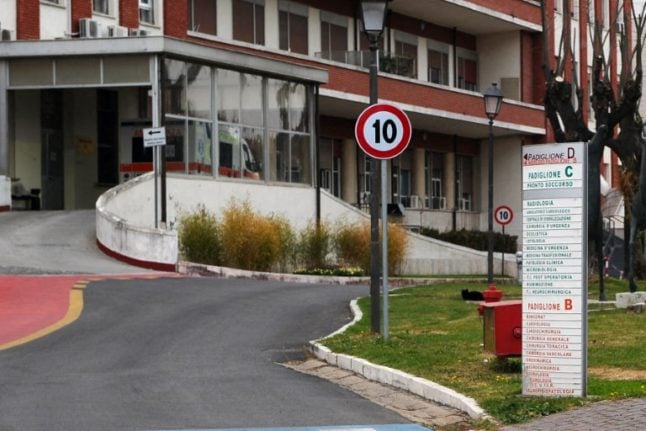Health Minister Roberto Speranza signed an ordinance on Friday evening changing the coronavirus restrictions in two regions, and keeping four others in the ‘orange’ zone.
The island of Sardinia moves from the high-risk ‘red’ to the slightly less restrictive orange zone thanks to an improvement in the contagion rate locally, the health ministry stated.
However Valle D’Aosta will turn from orange to red from Monday as the situation remains worrying in the small northern region.
MAP: Which zone is your region in under Italy’s coronavirus rules?
The changes will go into effect from Monday May 3rd.
The regions of Basilicata, Calabria, Puglia and Sicily remain orange for at least one more week.
All other regions and autonomous provinces are under yellow zone restrictions, meaning lighter restrictions are in place in most of Italy.
However, local ‘red’ zones may be declared in areas with spikes in the infection rate.
Many coronavirus rules within Italy’s yellow zones were relaxed from Monday April 26th under the government’s new emergency decree.
READ ALSO:
- ‘Green pass’: How Italy’s coronavirus immunity card works
- Schools, restaurants, gyms, travel: Here’s Italy’s new timetable for reopening
- When will Italy relax the restrictions on international travel?
Restaurants, bars, hotels, theatres and museums in these areas can reopen, and are now gearing up for their first busy weekend after months of tough restrictions.
Some 47 million people living in Italy’s yellow zone regions are now free to travel around most of the country without restrictions.
People in red and orange are now allowed to enter and leave these areas for non-essential reasons, including for tourism, using a new immunity pass.

Many rules, including those on social distancing and mandatory mask-wearing in public, remain in place.
Italy’s national coronavirus Rt reproduction number has risen back to 0.85, from 0.81 the week before, with significant regional variations, according to the latest health data reported on Friday by the Health Ministry and Higher Health Institute (ISS).
Restrictions could be re-imposed if the value reaches 1, which means the overall infection rate is rising.
The incidence rate of new cases continues to fall however, with 146 cases for every 100,000 inhabitants, down from 152 last week, the report said.
“Although the vaccination campaign is progressing significantly, overall, the incidence rmains high and still far from levels (50 per 100,000) that would allow the containment of new cases,” the report stated.
🔴Diretta della conferenza stampa del 30 aprile sull’analisi dei dati Monitoraggio Regionale #Covid19 della Cabina di Regia con il Presidente dell’@istsupsan , Silvio Brusaferro, e il DG della Prevenzione, Gianni Rezza⁰⁰https://t.co/3vHtYHLYnZ
— Ministero della Salute (@MinisteroSalute) April 30, 2021
Italy on Thursday hit its target of giving half a million jabs in one day by the end of April.
The target had originally been set for mid-April and was pushed back after Italy’s vaccine rollout was hit repeatedly by supply delays, bureaucratic problems, and cancelled appointments amid falling public trust in the AstraZenenca jab.
The jump in vaccination numbers on Thursday followed days of cancelled appointments and vaccine centre closures earlier this week as many regions started to run out of doses.
READ ALSO: ‘It felt like a betrayal’: Foreign residents in Italy report problems getting vaccinated
Despite the new increase, Italy’s seven-day average of daily inoculations is still only around 360,000, the Il Sole 24 Ore newspaper calculated
New vaccine supplies started to arrive in Italy from Wednesday, and the country’s vaccination rollout will now speed up “significantly” from May, the Italian government’s Covid commissioner Francesco Figliuolo said this week
Figliuolo said on Thursday that he “hoped” Italy would reach the target of having 80% of the adult population vaccinated “by the end of September”.
Italy has given a total of 19.4 million shots as of Friday, and has 5.7 million people fully vaccinated, official figures show.



 Please whitelist us to continue reading.
Please whitelist us to continue reading.
How does one get the Immunity pass? I live in a currently orange zone and want to go to Lazio. Where and when can I get such a pass?